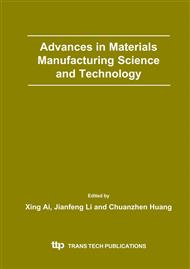p.677
p.682
p.687
p.692
p.697
p.702
p.707
p.711
p.716
A Monitoring System of Drill Wear States Using a Hybrid Neural Network
Abstract:
A reliable and sensitive technique of cutting tool condition monitoring in drilling is essential help for practising engineers. It is commonly known that a worn drill bit produces a poor quality hole. In extreme cases, a catastrophic failure of a drill bit during cutting can destroy a work-piece and damage a machine tool resulting in low productivity and expensive down time To detect the states of cutting tool wear condition, attempts are made to physically measure wear land. An intelligent system for detecting wear condition without interrupting the process is essential to avoid unexpected cutting tool breakage. In this work, an intelligent algorithm is proposed to real-time monitoring of drill wear states, in the form of a digital display, over a comprehensive range of cutting conditions. A novel neural network, Hybrid Neural Network (HNN), was developed and tested in this task. The results of the HNN have shown the ability to accurately monitor the wear states up to a 92% success rate. With such a highly accuracy of results, the developed system can be used for monitoring wear states in drilling and warning operators.
Info:
Periodical:
Pages:
697-701
Citation:
Online since:
December 2004
Authors:
Price:
Сopyright:
© 2004 Trans Tech Publications Ltd. All Rights Reserved
Share:
Citation:


